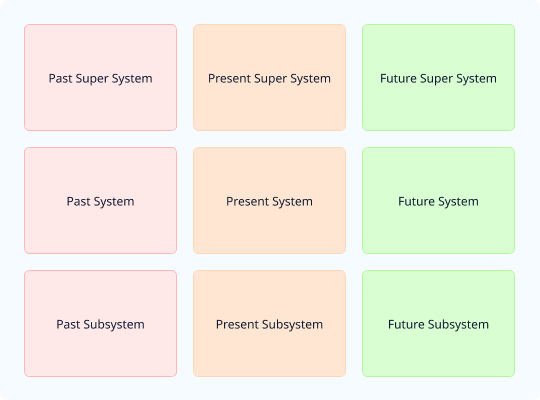
9 Windows is a creative thinking tool that is excellent for the generation of new ideas. It makes us think inventively, taking into consideration space and time. 9 Windows helps to predict the future based on analysis of past to present development occurring within a certain system. However, the future is exactly what we need; any new idea should be about a future; otherwise, this is not a new idea but not what we need.
9 Windows encourages a logical, systematic examination of correlations across time and space. This approach compels us to understand the structure of a system in both historical and current contexts, thereby suggesting future pathways for development and innovation. It excels at visually representing problems within their spatial and temporal dimensions.
Consider these scenarios where you and your team can harness the advantages of 9 Windows:
9 Windows is a versatile managerial creative thinking tool for system analysis and forecasting future development directions. It excels in problem-solving and fostering innovation, making it suitable for addressing both unexpected parameter deviations (excursions) and persistent issues.
Here are some scenarios where 9 Windows proves to be a valuable asset:
While these examples highlight its utility, the 9 Windows thinking process can be flexibly applied in various other contexts, cementing its position as an essential tool for innovative problem-solving.